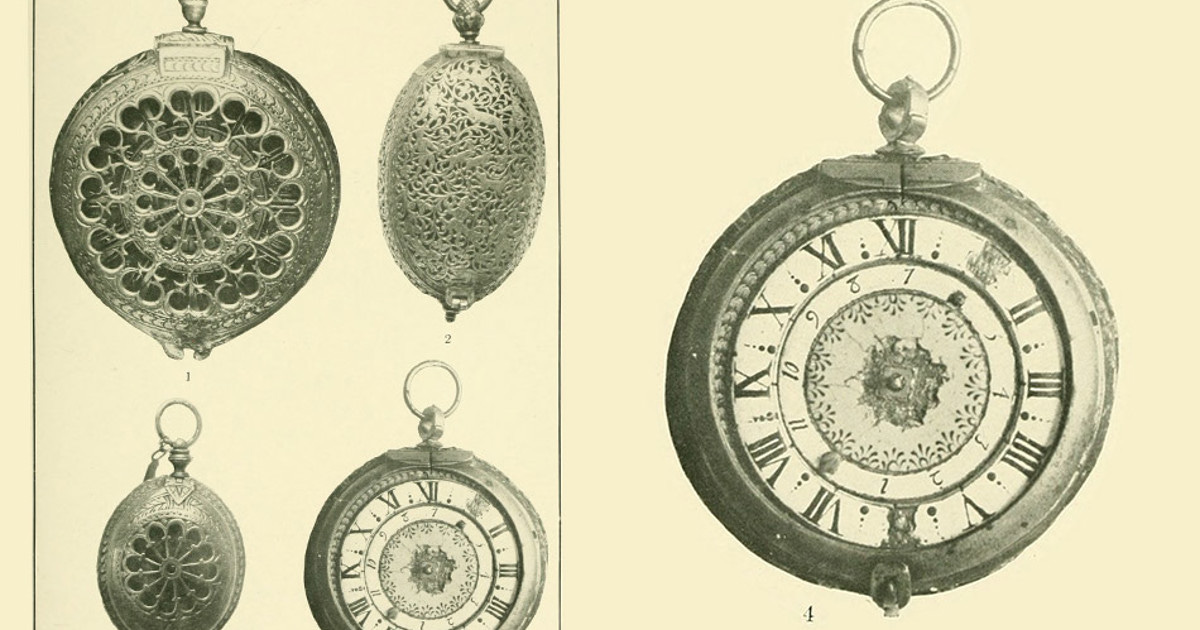The Rise and Fall of the Pocket Watch
From Nuremberg’s Ingenuity to Steampunk Revival: A Timeless Tale of Horology
Imagine a world where time wasn’t strapped to your wrist but tucked into your pocket, a gleaming treasure dangling from a chain. In the bustling streets of 16th-century Nuremberg, a clockmaker named Peter Henlein crafted a marvel—a tiny mechanical wonder that would become the pocket watch. From its humble beginnings as a pendant for the elite to its reign as a gentleman’s companion, the pocket watch ticked its way through history, shaping lives and cultures. Yet, like all great tales, its glory faded, eclipsed by the wristwatch’s rise in the chaos of war—only to flicker back to life in the hands of modern dreamers. This is the story of the pocket watch: a journey of ingenuity, elegance, and unexpected revival.
Historical Origins and Early Development
The story of the pocket watch begins in the early 16th century, with Peter Henlein, a German master clockmaker from Nuremberg, often credited with creating the first mechanical pocket watch around 1510. This early design, known as the "Nuremberg Egg," was not egg-shaped but rather a pomander-shaped watch worn as a pendant around the neck. It was a luxury item, distinguishing the upper class from craftsmen, with historical figures like the Duke of Modena, the Marchese di Manta, and Meshur Sheyh Dede known to have used these early prototypes.
By the 17th century, the pocket watch's form evolved. The introduction of waistcoats by Charles II of England in 1675 popularized carrying watches in pockets, marking a significant shift. Initially, these watches lacked glass screens, sporting brass lids, but by the early 1600s, glass became common, enhancing protection. The accuracy of pocket watches improved with innovations like the cylinder escapement in the early 18th century, attributed to Abbé de Hautefeuille and applied by George Graham, and the lever escapement, invented by Thomas Mudge in 1755 and becoming common after 1820.
Rise to Prominence: Technological and Cultural Impact
The pocket watch's rise was fueled by technological advancements and cultural adoption. By the late 18th century, it was no longer exclusive to the elite, with cheap versions available for sailors, reflecting its practical utility. The American Watch Company's introduction of the Waltham Model 57 in 1857, using interchangeable parts, revolutionized production, reducing costs and making repairs easier. This mass production, often in coin silver (90% pure), made pocket watches accessible to a broader audience.
Culturally, pocket watches were symbols of affluence and sophistication. They played crucial roles in professions requiring precise timekeeping, such as railroad work, where "railroad grade" watches met strict accuracy standards. In literature, the White Rabbit's pocket watch in Lewis Carroll's "Alice in Wonderland" (1865) highlighted their cultural significance, while Sherlock Holmes' frequent checks of his pocket watch in Arthur Conan Doyle's stories underscored their everyday use.
Decline: The Shift to Wristwatches
The decline of the pocket watch began with the rise of wristwatches, initially designed for women in the late 19th century as fashion accessories. However, World War I (1914–1918) was a pivotal moment. Soldiers found wristwatches more practical for quick time checks in combat, leading to the popularity of trench watches. This military adoption shifted perceptions, and post-war, wristwatches became the norm for men, overshadowing pocket watches by the early 20th century.
The transition was not just about convenience but also social perception. Previously, wristwatches were seen as feminine, but wartime necessity changed this, with men adopting them for their practicality. The evidence leans toward World War I as the seminal moment, with historians noting that by the 1920s, wristwatches dominated, driven by their ease of use and the cultural shift following the war.
Legacy and Modern Resurgence
Despite its decline, the pocket watch has not disappeared. It saw a small resurgence in the late 1970s to early 1980s with the return of three-piece suits, and more recently, it has found a niche in the steampunk subculture, which embraces Victorian-era aesthetics. In the United States, gold-cased pocket watches remain traditional retirement gifts, symbolizing a lifetime of service and adding a personal touch to the occasion.
The enduring charm of pocket watches lies in their mechanical beauty and historical significance. Collectors continue to seek them, with notable auctions like the 14k gold Waltham pocket watch from the RMS Titanic, originally belonging to John Jacob Astor IV, selling for £1.175 million in a recent auction, far exceeding its estimated value. This reflects their value as pieces of horological history, undeterred by their less trendy status in modern times.
Conclusion
The pocket watch's journey from a 16th-century luxury to a 20th-century relic is a tale of innovation, adaptation, and cultural shift. Its rise was marked by technological advancements and widespread adoption, while its fall was driven by the practical advantages of wristwatches, particularly during World War I. Today, it lives on in niche communities and traditions, a testament to its enduring legacy.
Key Citations:





